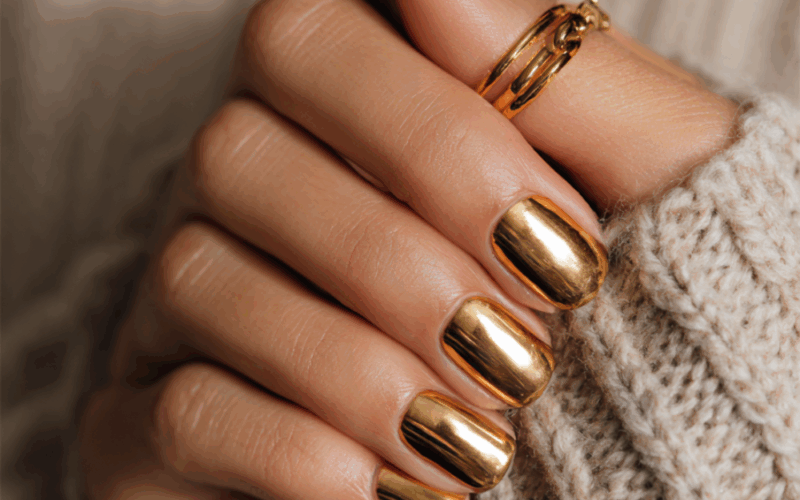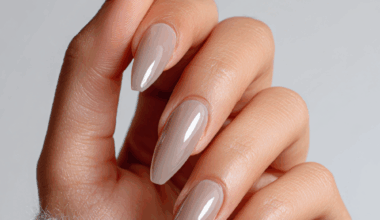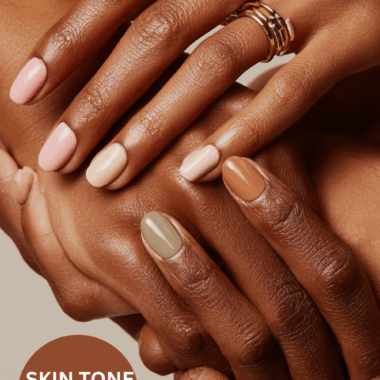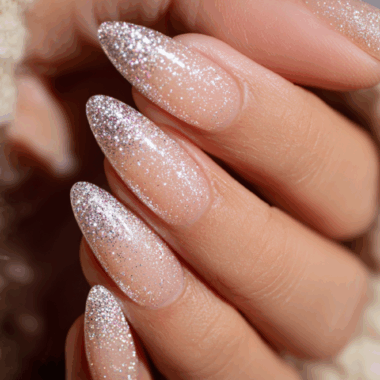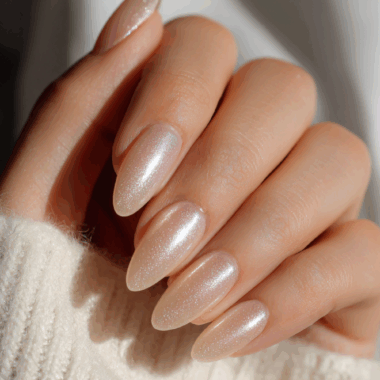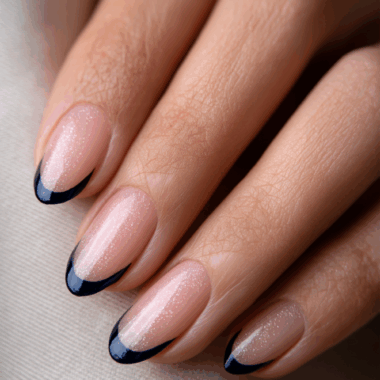Few nail trends capture light, texture, and attention quite like chrome nails. Sleek, reflective, and futuristic, chrome nail art embodies high fashion and high shine.
Whether you prefer a platinum mirror finish or the warmth of liquid gold nails, this trend transforms your manicure into a polished metallic statement.
Chrome nails aren’t new—but the level of refinement and versatility in 2025 has evolved beyond simple powders. Nail artists are blending new nail techniques with advanced pigments to create multidimensional effects that look like molten metal poured over your fingertips.
This guide explores everything you need to know about chrome nail art—from mastering the mirror finish to experimenting with radiant liquid gold.
What Is Chrome Nail Art?
Chrome nail art is a reflective metallic manicure achieved by layering a high-gloss base with fine chrome powders or specialized gel topcoats.
When applied correctly, the surface reflects light like polished metal—creating the iconic “mirror” effect.
Originally popularized in editorial fashion shoots and celebrity red carpets, chrome nails are now a core part of the beauty landscape, with endless color variations and finishes.
The Science Behind the Mirror Finish
Achieving a true mirror finish relies on smooth surface tension and pigment uniformity. The reflection comes not from glitter, but from ultra-fine metallic particles aligning perfectly across a smooth gel base.
Key Components
- Base Layer: A dark, glossy gel base—typically black, nude, or silver—to enhance reflectivity.
- Chrome Powder: Ultra-fine aluminum or mica-based pigment applied with a sponge or silicone tool.
- Top Coat: A no-wipe gel top coat seals and smooths the chrome layer to preserve shine.
When light hits the surface, the particles reflect uniformly, producing that seamless metallic gleam that feels more like a mirror than polish.
The Rise of Liquid Gold Nails
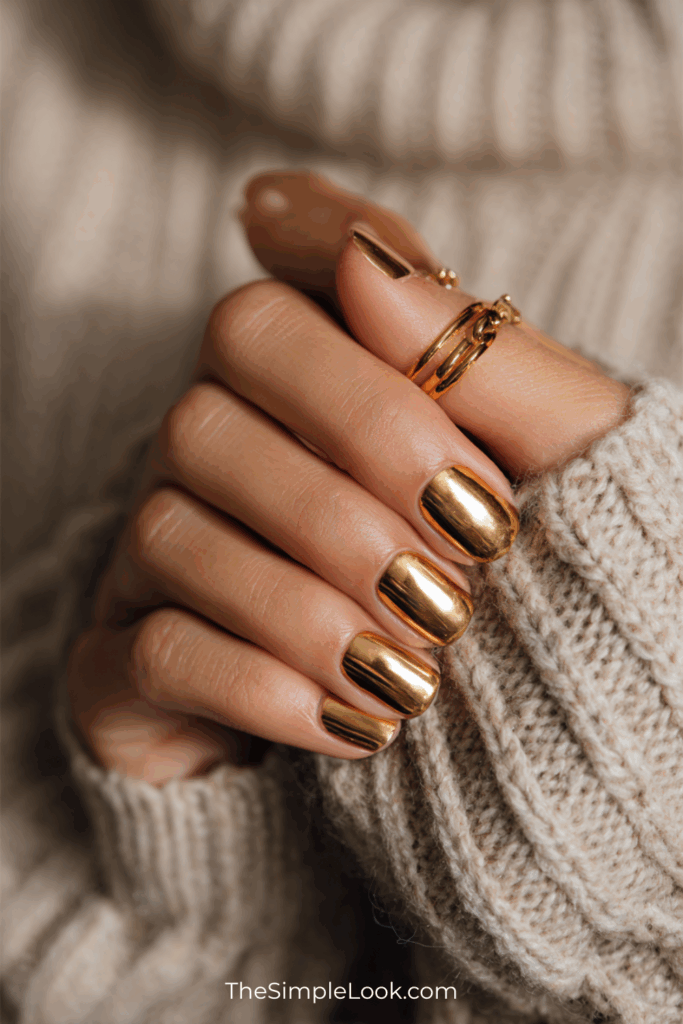
The liquid gold nails trend represents the warmer, more luxurious side of chrome nail art. While silver and platinum tones emphasize futuristic aesthetics, liquid gold evokes classic opulence and depth.
This look relies on gold-based chrome powders or metallic gel paints with subtle dimensional shimmer. Unlike standard chrome, which feels slick and flat, liquid gold nails often include a molten quality—fluid, glowing, and slightly reflective in motion.
Why It’s Trending:
- Complements warm undertones and tan skin beautifully.
- Works with both short and long nail shapes.
- Offers versatility—from minimal gold accents to full-metal finishes.
Step-by-Step Guide to a Perfect Mirror Finish
Creating flawless chrome nails is all about control, precision, and product layering. Here’s how to achieve that editorial-level sheen:
Step 1: Prep and Shape
Start with clean, dry nails. Remove oils, push back cuticles, and file into your preferred shape. Smooth the nail surface with a buffer to avoid micro-textures that disrupt the chrome’s reflection.
Step 2: Apply Base Coat
Use a gel base coat and cure under a UV or LED lamp. This step strengthens the foundation and ensures the chrome powder adheres properly.
Step 3: Add a Glossy Color Base
Apply one or two coats of gel polish—black is ideal for high contrast, while nude or white bases soften the effect. Cure fully.
Step 4: Seal with a No-Wipe Top Coat
Apply a thin layer of no-wipe top coat and cure it. This creates a tack-free, smooth surface perfect for chrome powder adhesion.
Step 5: Apply Chrome Powder
Use a silicone applicator or fingertip to rub the chrome powder onto the nail surface in small circles. Continue until you achieve a flawless metallic reflection.
Step 6: Final Top Coat
Apply another layer of top coat to seal the chrome layer and protect the shine. Cure once more and wipe off any residue.
Pro Tip: To extend shine longevity, reapply a thin top coat layer every few days.
Nail Technique Variations for Chrome Art
Chrome doesn’t have to be uniform across all nails. Artists now use nail techniques to combine reflective effects with texture, pattern, and gradient depth.
1. Gradient Chrome
Blend chrome into soft transitions using a sponge or brush—creating an ombré metallic look that fades from mirror silver to transparent tip.
2. French Chrome
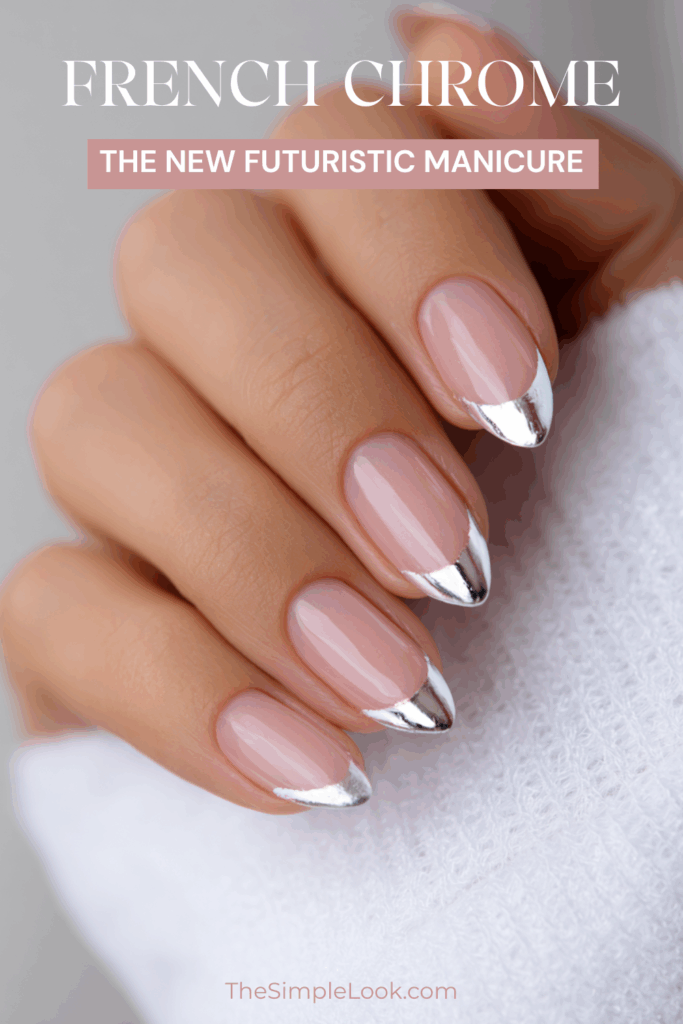
Apply chrome powder only to the tips for a futuristic twist on the French manicure. Works beautifully with almond or square shapes.
3. Chrome Accents
Use chrome selectively on one or two accent nails paired with matte or nude finishes for a sophisticated contrast.
4. Embossed Chrome Art
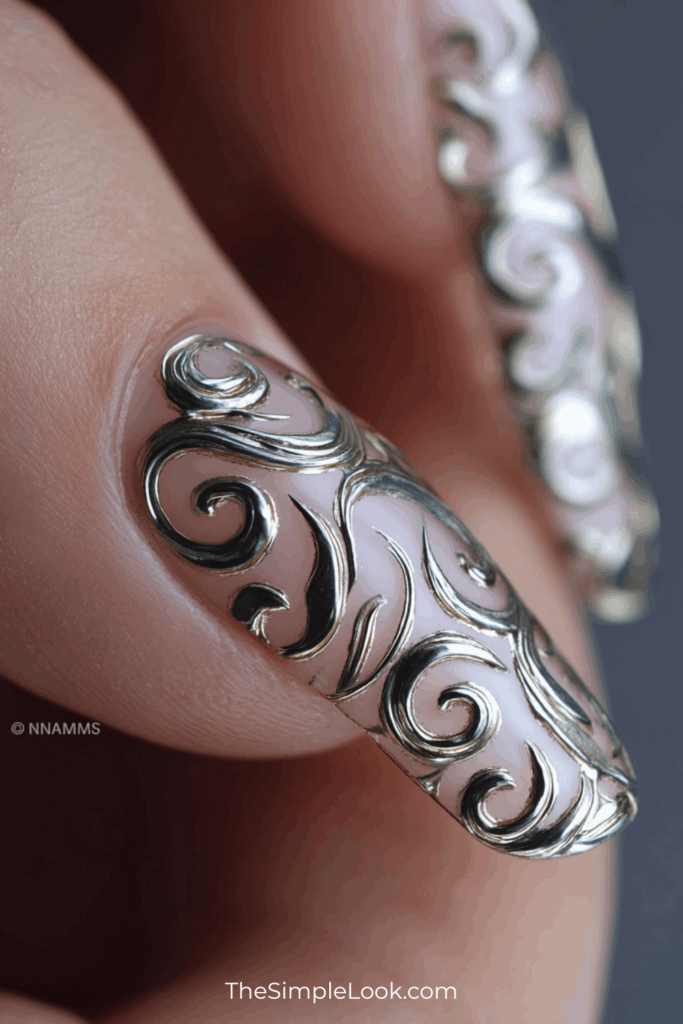
Create raised designs using gel, then layer chrome powder over the pattern for a sculpted, reflective texture.
5. Liquid Gold Swirls
Mix gold chrome with clear gel to create molten swirl designs that mimic melted metal drifting across the nail.
Chrome Nail Art for Different Nail Shapes
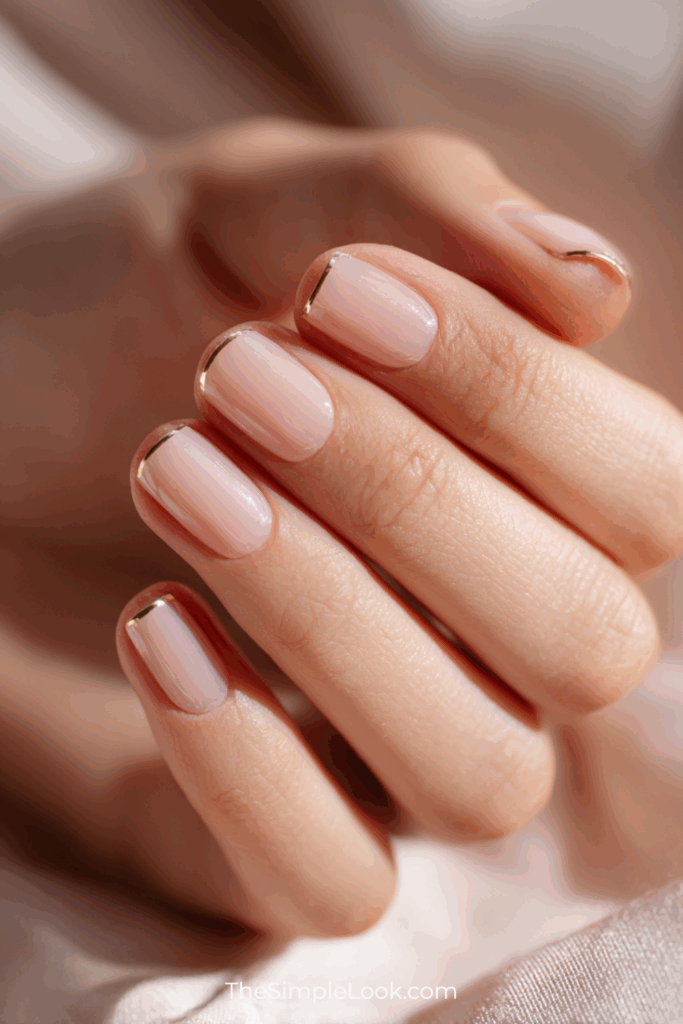
Almond Nails
Enhances elegance—mirror shine elongates the fingers, while rounded tips reflect light evenly.
Coffin Nails
Ideal for bold chrome statements. The flat surface amplifies reflection, making every movement catch the eye.
Short Nails
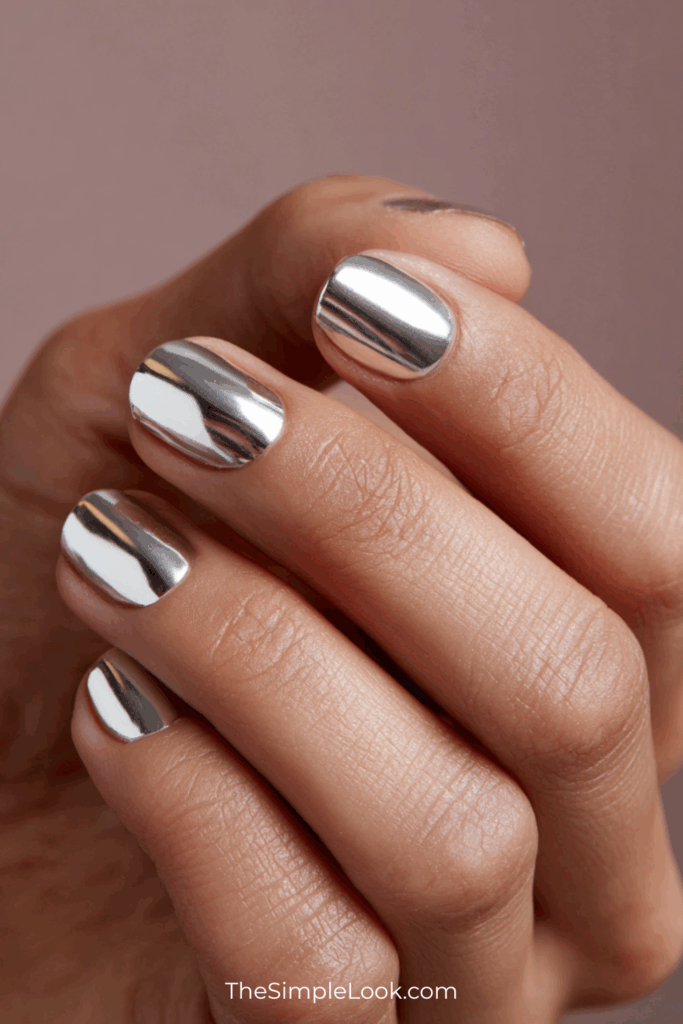
A full mirror finish makes short nails look sleek and modern. Use finer chrome powder for precision on smaller nail beds.
Oval or Round Nails
Pair subtle liquid gold effects with soft pastel bases for wearable everyday metallics.
Maintenance and Longevity Tips
Chrome finishes require thoughtful care to maintain their high-gloss impact.
- Avoid Harsh Chemicals: Acetone, alcohol, and strong soaps can dull the chrome effect.
- Use Gloves: Protect nails from abrasives when cleaning or washing dishes.
- Hydrate Cuticles: Oils keep the surrounding area healthy and enhance reflectivity.
- Buff Lightly Between Coats: If dullness appears, gently buff and reapply a top coat layer.
- Store Powders Properly: Exposure to air and moisture can degrade chrome pigments over time.
Trending Chrome Shades for 2025
The future of chrome nail art is diverse and dimensional. While classic silver remains a staple, the latest palette pushes boundaries:
- Platinum Mirror: Pure silver with cold reflectivity—timeless and sharp.
- Rose Chrome: A blend of silver and rose pigments for a soft metallic blush.
- Liquid Gold: Deep gold with fluid shine, perfect for editorial looks.
- Gunmetal Chrome: Dark, smoky metallic for modern minimalists.
- Opal Chrome: Iridescent overlay combining pearl shimmer with metallic depth.
Advanced Chrome Nail Techniques
Gel Overlay Chrome
Layering chrome powder beneath translucent gel builds depth and makes the finish appear liquid from within.
Mirror Mosaic
Apply small reflective fragments under topcoat for a shattered glass effect that still retains mirror shine.
Mixed Metallics
Blend silver, bronze, and gold chrome powders to create a dimension that shifts under different lighting.
Velvet Chrome Hybrid
Combine matte and chrome finishes on alternating nails for contrasting textures—a top editorial trend for 2025.
The Future of Mirror Nails
Chrome nail art continues to evolve alongside material innovation. New formulas now incorporate flex-chrome polymers that move with the nail surface, reducing cracking and fading. Artists are also experimenting with AI-simulated metallic gradients and nano-reflective pigments for near-holographic finishes.
In essence, chrome nails are becoming not just a trend, but a form of modern craftsmanship—where precision meets artistry through light, reflection, and metallic chemistry.
Conclusion
Chrome nail art remains the ultimate symbol of precision, shine, and innovation. Whether you choose a silver mirror finish or a molten liquid gold style, these techniques redefine what polish can achieve.
With the right base, proper layering, and consistent care, your nails can reflect like glass—embodying luxury, confidence, and contemporary beauty.
In a world of evolving textures and finishes, chrome nails remind us that shine is timeless—and mastery of nail technique transforms it into art.
